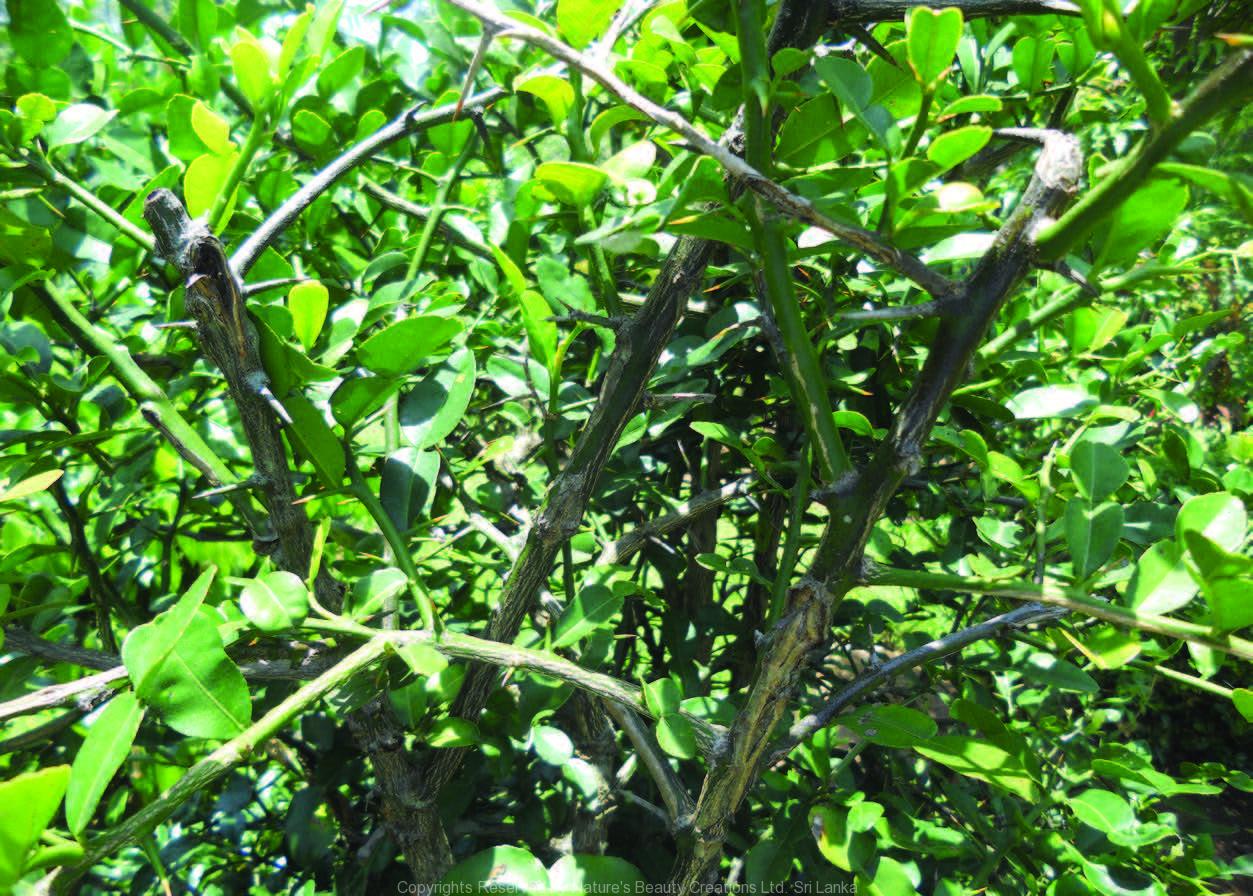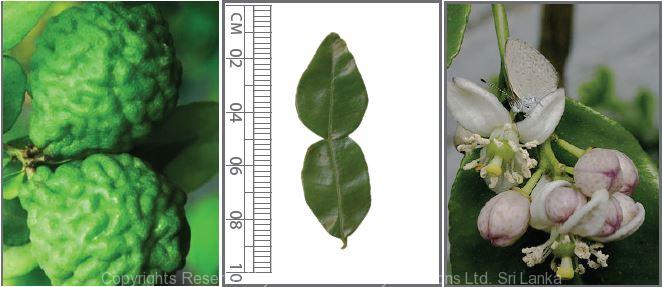

Traditional Knowledge
Useful plant parts :
Fruit
Uses in traditional medicine :
- Fruit juice has expectorant and antidandruff properties and is used in aromatic baths and as a shampoo
- Fruit juice with ginger and other aromatics is used to treat postpartum septicemia
Scientific Research
Chemical constituents:
Terpenes: terpinen-4-ol, pinene, terpineol, 1,8-cineole, citronellol and limonene from essential oils of fruit peel and leaves; glyceroglycolipids from leaves; coumarins: hystrixarin, hopeyhopin, alkaloid: hystrolinone and benzenoid derivative: hystroxene from roots
Bioactivity :
Essential oil: anti-inflammatory, antibacterial; ethyl acetate extract of leaves: antioxidative, cytotoxic against human cancer cell lines; alcohol and chloroform extract of fruit peel: antifertility activity and cardioprotective
Clinical:
Massage with essential oil of fruit peel: provides relief from stress and depression; Topical application of juice can cause phytophotodermatitis
References : Butryee, C. et al., (2009), Effect of processing on the flavonoid content and antioxidant capacity of Citrus hystrix leaf, Int J Food Sci Nutr, 60(2), 162-74. Chueahongthong, F. et al., (2011), Cytotoxic effects of crude kaffir lime (Citrus hystrix DC.) leaf fractional extracts on leukemic cell lines, Journal of Medicinal Plants Research, 5(14), 3097-3105. Hongratanaworakit, T. and Buchbauer, G., (2007), Chemical composi- tion and stimulating effect of Citrus hystrix oil on humans, Flavour and Fragrance Journal, 22(5), 443-449. Koh, D. and Ong, C. N., (1999), Phytophotodermatitis due to the application of Citrus hystrix as a folk remedy, British Journal of Derma- tology, 140(4), 737-738. Lawrencejia, B. M. et al., (1971), Constituents of the leaf and peel oils of Citrus hystix, D.C., Phytochemistry, 10, 1404-1405. Lertsatitthanakorn, P. et al., (2006), In vitro bioactivities of essential oils used for acne control, International Journal of Aromatherapy, 16(1), 43-49. Nanasombat, S. and Lohasupthawee, P., (2005), Antibacterial activity of crude ethanolic extracts and essential oils of spices against Salmonellae and other Enterobacteria, KMITL Science and Technology Journal, 5(3), 525-538. Panthong, K. et al., (2013), Benzene, coumarin and quinolinone derivatives from roots of Citrus hystrix, Phytochemistry, 88, 79-84. Piyachaturawat, P. et al., (1985), Antifertility effect of Citrus hystrix DC., Journal of Ethnopharmacology, 13(1), 105-110. Putri, H. et al., (2013), Cardioprotective and hepatoprotective effects of Citrus hystrix peels extract on rats model, Asian Pac J Trop Biomed, 3(5), 371-5. Waikedre, J. et al., (2010), Chemical Composition and Antimicrobial Activity of the Essential Oils from New Caledonian Citrus macroptera and Citrus hystrix, Chemistry & Biodiversity, 7, 871-877.
Copyrights Reserved By
Natures Beauty Creations




